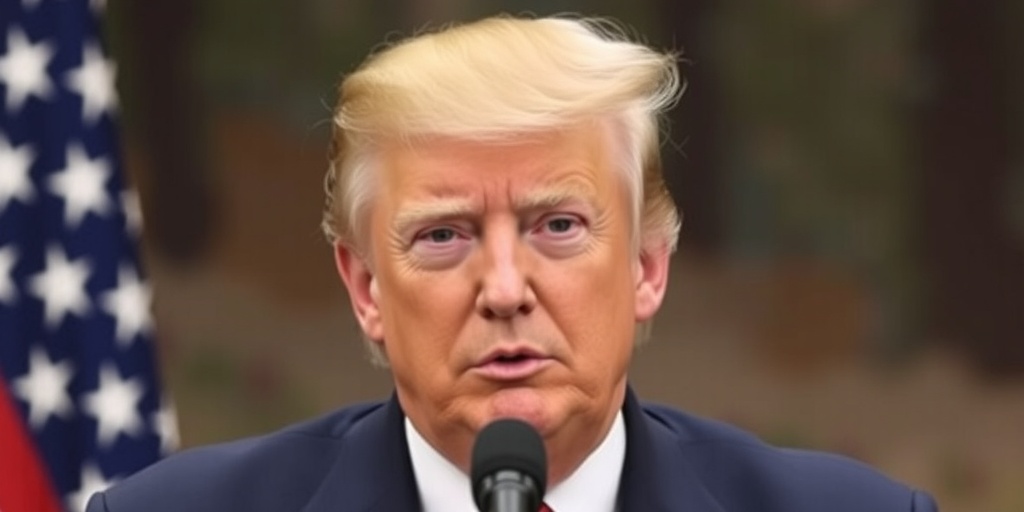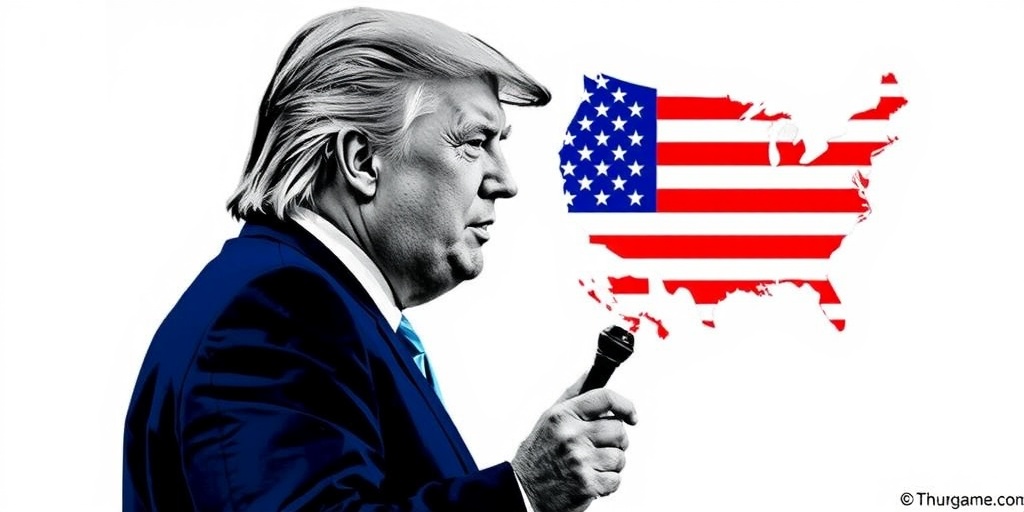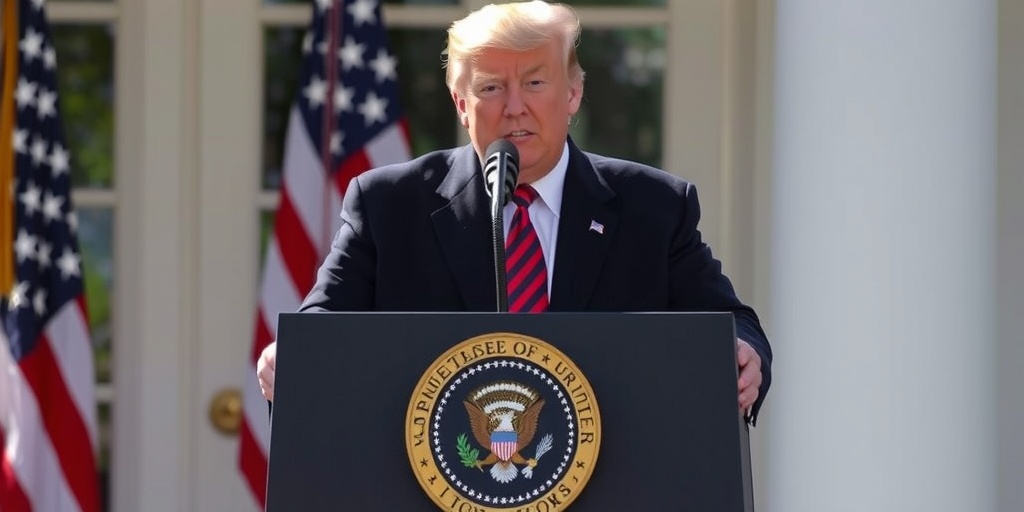Now Reading: Trump Pushes for Increased Logging in National Forests
-
01
Trump Pushes for Increased Logging in National Forests
Trump Pushes for Increased Logging in National Forests

Trump’s Timber Initiative: Balancing Economic Growth and Environmental Concerns
In a bold move reflecting his administration’s aggressive stance on natural resource management, President Donald Trump has unveiled plans to significantly increase logging activities across vast tracts of public land. His directive, issued over the weekend, calls upon federal agencies to explore ways to circumvent environmental regulations and protections for endangered species, aiming to boost timber production across approximately 280 million acres of national forests and other public lands.
The initiative appears strategically timed, as the president is contemplating imposing tariffs on timber imports, specifically targeting countries like Canada, Germany, and Brazil — key suppliers to the U.S. timber market. With the U.S. having imported nearly half of its forest products from Canada in recent years, the move aims to bolster domestic supply, which Trump has repeatedly criticized as insufficient.
Environmental advocates are sounding alarm bells regarding the proposed logging expansion. Groups such as the Center for Biological Diversity have voiced strong opposition, warning that increased logging activities could lead to the degradation of American forests, detrimental impacts on air and water quality, and significant disruptions to wildlife habitats. “Trump’s order will unleash the chainsaws and bulldozers on our federal forests,” declared Randi Spivak, public lands policy director for the Center. According to her, the proposed clear-cutting could precipitate increased fire risks, contribute to the extinction of vulnerable species, pollute ecosystems, and undermine recreational areas treasured by many.
Trees play a critical role in absorbing carbon dioxide—a significant greenhouse gas contributing to global warming. Therefore, the prospect of large-scale logging raises important questions about carbon emissions and climate change. Critics argue that cutting down trees not only releases stored carbon back into the atmosphere but also complicates efforts to combat climate change.
In addition to promoting logging, Trump’s executive order tasks the Commerce Department with investigating potential “dumping” of lumber in American markets by foreign suppliers. This line of inquiry could lead to increased tariffs on imported lumber, further tightening the grip on foreign timber products. In 2021, a substantial 46% of the U.S. forest product imports were sourced from Canada, showcasing the reliance on international suppliers.
In support of the drive to deregulate timber production, Trump’s order notes that “onerous” federal policies have hampered the country’s ability to cultivate an adequate timber supply. This, they argue, has led to rising housing and construction costs and poses threats to national security. The administration is pushing to assemble a high-level committee, colloquially dubbed the "God Squad," empowered to override provisions of the Endangered Species Act. This committee historically convenes only under emergencies and has seldom been utilized since its inception in 1978.
The Endangered Species Act mandates that logging and other activities undergo rigorous assessments to evaluate their potential harm to protected wildlife and habitats. Historically, exemptions from this process have been limited to minor projects, but Trump’s order seeks broader exceptions for timber production.
Supporters of the initiative, including Trump administration officials, assert that current forest management practices are outdated and counterproductive. Peter Navarro, senior counselor for trade and manufacturing, has lamented that previous timber policies lead to wildfires and habitat degradation, ultimately harming the economy.
Trump’s timber plans resonate with the recommendations outlined in Project 2025, a policy framework developed by the Heritage Foundation advocating for a significant increase in timber production as a strategy to minimize wildfire risks. However, experts highlight the complexities surrounding wildfire management, attributing severity and frequency to climate change and drought, rather than solely to timber management practices.
In line with the administration’s objectives, Trump recently nominated Tom Schultz, a former lumber industry executive, to lead the U.S. Forest Service, responsible for overseeing approximately 193 million acres of national forests.
The logging initiative has garnered a mixed response from industry groups. Heidi Brock, CEO of the American Forest and Paper Association, acknowledges the aim to boost U.S. manufacturing while stressing the need for sustainable forest management. Meanwhile, the National Hardwood Lumber Association recognizes the intention behind Trump’s order, emphasizing the importance of balancing economic development with environmentally sound practices.
Environmental organizations remain deeply concerned, with voices like Blaine Miller-McFeeley from Earthjustice arguing that the administration’s orders regress efforts towards sustainable forest management. He warns that these directives resemble a move back to the 19th century, where indiscriminate logging shattered ecosystems for industrial gain.
As Trump’s administration forges ahead with its timber directives, the clash between economic aspirations and environmental stewardship becomes increasingly pronounced, raising persistent questions about the long-term impacts on American forests and global climate initiatives. The battle lines are drawn, and the outcome could shape the future of forestry and conservation in the United States.
Stay Informed With the Latest & Most Important News
Previous Post
Next Post
-
 01New technology breakthrough has everyone talking right now
01New technology breakthrough has everyone talking right now -
 02Unbelievable life hack everyone needs to try today
02Unbelievable life hack everyone needs to try today -
 03Fascinating discovery found buried deep beneath the ocean
03Fascinating discovery found buried deep beneath the ocean -
 04Man invents genius device that solves everyday problems
04Man invents genius device that solves everyday problems -
 05Shocking discovery that changes what we know forever
05Shocking discovery that changes what we know forever -
 06Internet goes wild over celebrity’s unexpected fashion choice
06Internet goes wild over celebrity’s unexpected fashion choice -
 07Rare animal sighting stuns scientists and wildlife lovers
07Rare animal sighting stuns scientists and wildlife lovers





















